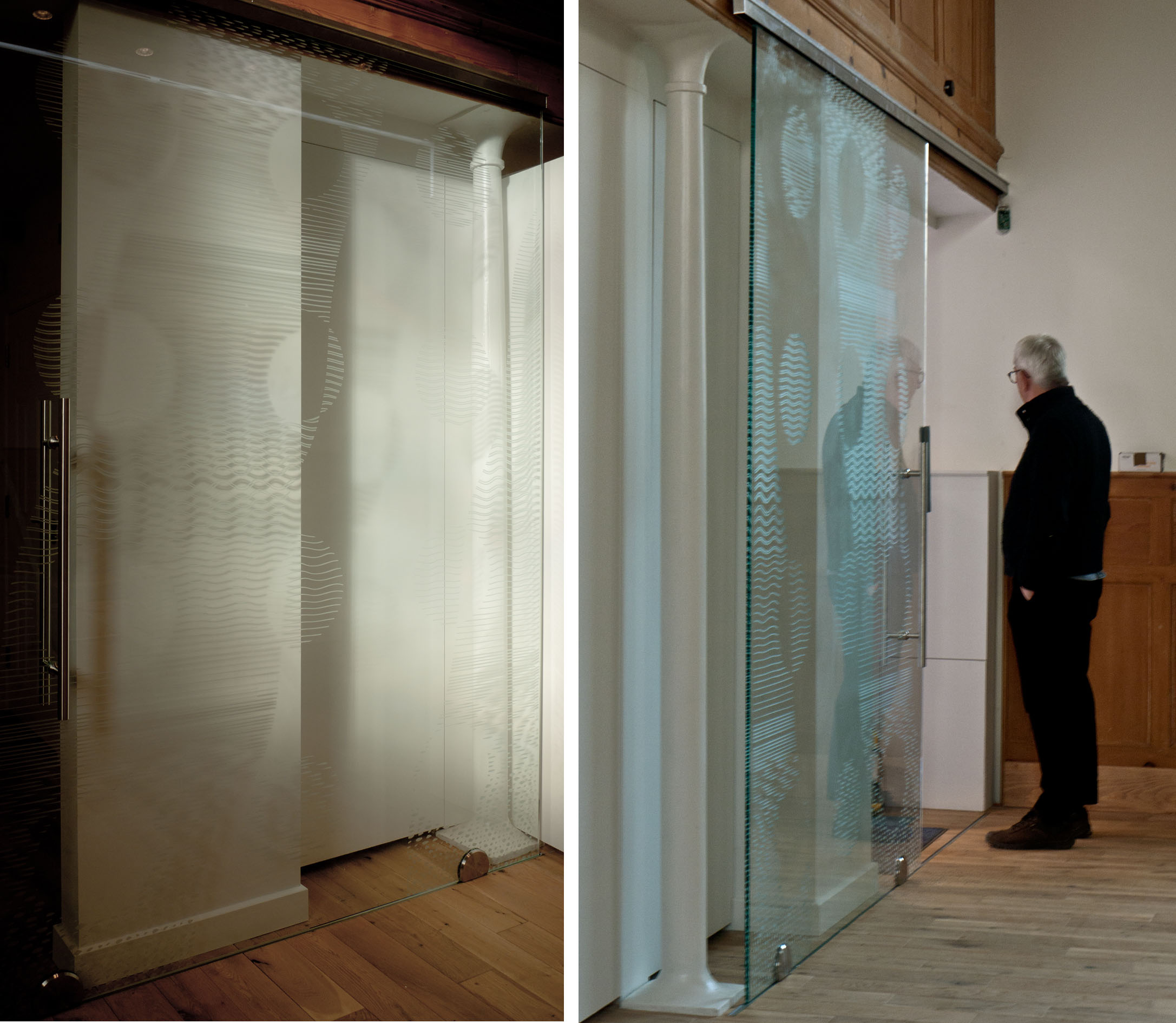Left: The Resurrection Chapel. Right: Gladioli and Stephen stoned by Clayton & Bell (1870s)
St Mary Abbots Church in Kensington is large and grand, designed by George Gilbert Scott with stained glass by the firm of Clayton and Bell. The Resurrection Chapel was redesigned by G.G.S’s grandson in the 1920s, and last week was beautifully decorated for remembrance day. For once the familiar sight of stained glass obscured by flowers didn’t annoy me at all.
Juliet’s Goodden’s paintings on the left hand side of the west wall.
On one wall of the church, either side of the west door, was an exhibition of paintings by Juliet Goodden celebrating interfaith week. I am a fan of Juliet’s paintings. In this series, which is about diverse faiths living side by side, she has painted religious souvenirs and fragments of patterns and places on top of prayer flags and saris. There is not a lot of painting on some of these intricate pictures, she said a lot of the work was in thinking about what should go where. Amongst the small stained glass windows in the nave and the stone memorial plaques they looked totally at home, glowing in the gloom.
Juliet Goodden’s paintings on the right hand side of the west wall.
However the church is brighter than it used to be - in the 1950s the firm of Con and Barnet carried out stained glass repairs and also decided to remove the borders and canopies of Clayton and Bell’s nave windows replacing them with white glass (below left). This strange decision emphasises imaginary tracery and makes the windows seem as if they weren’t made for this church. It also causes the light to flood on to the surface of the glass making the details harder to see.
Left: nave windows. Right: window showing St. John in Patmos.
You can see the glare and gloom effect along with patches of artificial light in the photos of the nave above and below. You can also see the wonderful detail in the figures and the birds flying through patterned backgrounds.
Left: nave & clerestory windows. Right: baptism window.
The patterns on the glass, particularly in the cloth and the backgrounds, take you back to Juliet’s paintings where plant derived patterns mingle with architectural shapes. Amongst the sgraffito floral glass backgrounds I spotted a couple of bright red pieces (above the hand holding the lantern below) that don’t match up. I imagine these to be hasty replacements by those vandals Con & Barnet - but this scratchy drawing is so lively that it just adds to the charm.
Left: detail from window of St Timothy. Right: detail from nativity window.


























